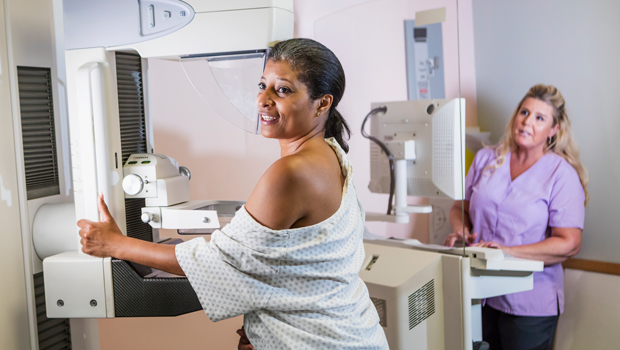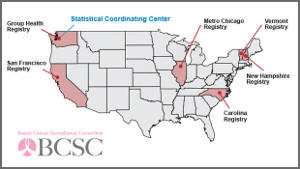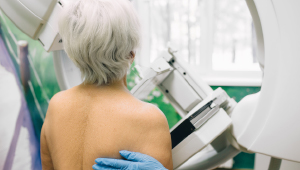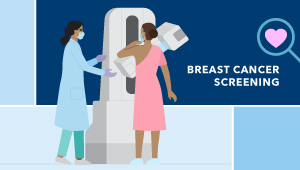New study: Analysis supports new recommendation to begin mammogram screening at 40

KPWHRI part of multi-site research team
Breast cancer screening every 2 years beginning at age 40 has the potential to reduce the number of women who die of breast cancer while minimizing the harms, according to a large study published recently.
These results helped inform the updated final recommendation newly released by the U.S. Preventive Services Task Force.
Since 2009, the task force has recommended that women in their 40s make an individual decision about when to start screening based on their health history and preferences, being sure to start no later than age 50 and ending at age 74.
Since then, mammography technology has improved in terms of higher cancer detection rates and lower risks of false positives, according to Amy Trentham-Dietz, PhD, lead author of the study, associate director of population science and community engagement, University of Wisconsin Carbone Cancer Center, and professor of population health sciences, University of Wisconsin School of Medicine and Public Health.
“At the same time, we are seeing increased breast cancer incidence in younger women and continue to see racial disparities in breast cancer death rates,” she said.
Trentham-Dietz and Jeanne Mandelblatt, MD, MPH, professor of oncology, Georgetown University, led 6 teams of national and international decision analysis researchers from the National Cancer Institute-funded Cancer Intervention and Surveillance Modeling Network.
Using breast cancer simulation models, the researchers evaluated 36 screening strategies with data from national cancer registries, breast cancer clinical trials, and the Breast Cancer Surveillance Consortium. The strategies varied based on starting and stopping ages, intervals between screenings, breast density, comorbidities, and different screening technologies including digital mammography and digital breast tomosynthesis. These strategies were ranked by their benefits, such as breast cancer deaths averted and life-years gained, and risks of false-positive recalls, benign biopsies, and overdiagnosis.
“Re-evaluating mammography screening now is timely given new evidence about screening methods and increases in breast cancer rates among younger women,” Mandelblatt said. “Decision analysis conducted by independent teams of researchers can integrate evidence from many sources and provide a range of certainty about the impact of different decisions.”
For the first time, the decision analysis teams were able to provide estimates to the U.S. Preventive Services Task Force on the potential effects of different mammography screening strategies on the higher breast cancer death rate in Black women compared to all U.S. women.
“Our analysis suggests that trade-offs between benefits and risks of different screening strategies for Black women follow similar patterns as for all women combined,” Trentham-Dietz said. “However, screening alone won’t eliminate higher breast cancer death rates for Black women since that will require policymakers, clinicians, and scientists working to eliminate racial disparities in health care.”
The decision analysis also showed that women with dense breasts, higher breast cancer risk, and lower levels of other chronic diseases are estimated to experience greater breast cancer deaths averted and more life-years gained from mammography screening compared to women with lower density and cancer risk and higher levels of chronic diseases that limited health and life expectancy.
Kaiser Permanente Washington Health Research Institute members of the research team include Ellen O’Meara, PhD; Linn Abraham, MS; Carolyn Eng, PhD; and affiliate investigator Diana Miglioretti, PhD, ScM.
The study was published in The Journal of the American Medical Association.
The work of the Cancer Intervention and Surveillance Modeling Network Breast Cancer Working Group is supported by grant number U01CA253911 from the National Cancer Institute, part of the National Institutes of Health. This work was also supported by NCI grant P30CA014520. The Breast Cancer Surveillance Consortium is funded by NCI grant P01CA154292. Trentham-Dietz was also supported in part by a Vilas Associate Award from the University of Wisconsin–Madison. Coauthors of the study are affiliated with Stanford University, Geisel School of Medicine, National Cancer Institute, University of Vermont, Baylor College of Medicine, Albert Einstein College of Medicine, University of California Davis, MD Anderson Cancer Center, Kaiser Permanente Washington Health Research Institute, Erasmus MC – University Medical Center (Netherlands), Dana-Farber Cancer Institute, Georgetown University Medical Center, National Institute on Minority Health and Health Disparities, University of California San Francisco, University of Washington, and Harvard Pilgrim Health Care Institute.
Research

What is the Kaiser Permanente Washington Breast Cancer Surveillance Registry?
Kaiser Permanente Washington has been part of the national Breast Cancer Surveillance Consortium since 1994.
Cancer screening

Catching breast cancers when mammograms are limited
New study calculates risk-based approach to detect the most cancers with the fewest exams.
Research

Roundup of 3 recent studies on breast cancer screening
New research spotlights overdiagnosis, MRI before surgery, and a new way of predicting breast cancer risk


